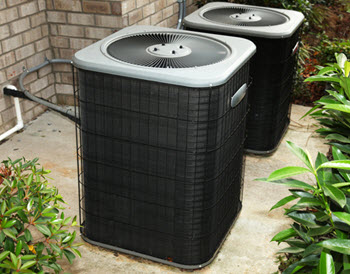 There is a straightforward reason why winter brings on dry air: whenever temperatures are low, humidity levels are low as well. Cold air is unable to hold a sufficient amount of water or moisture which is why there is much less moisture during the cooler season. Cool air simply holds less moisture compared to warm air. However, moisture is not increased by just raising the temperature inside the house. The air will still be dry despite the fact that it is warm. That is because there are other factors involved also.
There is a straightforward reason why winter brings on dry air: whenever temperatures are low, humidity levels are low as well. Cold air is unable to hold a sufficient amount of water or moisture which is why there is much less moisture during the cooler season. Cool air simply holds less moisture compared to warm air. However, moisture is not increased by just raising the temperature inside the house. The air will still be dry despite the fact that it is warm. That is because there are other factors involved also.
Issues That Dry Indoor Air Causes
There are several different problems that are caused by dry air, which includes cracked and itchy skin. Dry air also causes dry throats and noses. Due to environmental factors, upper respiratory conditions and diseases might also grow worse during the winter. That has to do with the way that the body functions.
The nasal passageways, throat, and nose contain moist membranes. These membranes help filter microorganisms, dirt, and dust to help prevent them from getting into the lungs. Whenever those membranes become dry, it causes them to become less effective at being able to capture particles. This results in problems like cough, colds, and itchy throats. Dry skin that is caused by dry air might appear to be a minor problem. However, if it is not managed properly, the condition can become even worse. Dryness may result in cracks that open up the skin and cause it to be much more vulnerable to getting infected. Chapped and cracked skin might be embarrassing and painful for some people, especially if these are visible to others.
Dry air can also cause static electricity. Fabrics may stick together as a result of this as well. Although it is harmless on its own, static electricity might cause mildly painful shocks whenever the skin touches a metal surface.
Dry skin might cause damage to property and homes as well, especially structures made out of wood like furniture, floors, ceilings, and walls, Dry air also affects paper, causing sculpture, artwork, notebooks, books, and similar items to become brittle and warped.
How To Make Dry Air Work The Best For You
Preventing dry air is the most effective way to manage it. The following are the best ways how to do this:
1. Repair Any Air Leaks Inside The Home
 Warps and cracks in joints, doors, and windows may let cold air in. That causes the indoor temperature to go down and force the heating system to have to work even harder. So before winter starts, a basic inspection of your home should be performed in order to identify any problems areas. Insulation solutions should be installed whenever necessary in order to prevent the loss of heat.
Warps and cracks in joints, doors, and windows may let cold air in. That causes the indoor temperature to go down and force the heating system to have to work even harder. So before winter starts, a basic inspection of your home should be performed in order to identify any problems areas. Insulation solutions should be installed whenever necessary in order to prevent the loss of heat.
2. Understand How Indoor Humidity Works
The lower the outdoor temperature is, the lower the amount of moisture can be held by indoor air. Overall, the ideal indoor humidity level should be about 45%. It is too high when it goes above 50%, and it is too low when it goes under 30%. A hygrometer, or an instrument for measuring the humidity, can come in handy in these situations. If you do not have one of these, you may need to look for common signs of extreme humidity. Here is how you do this:
Whenever windows start to fog or condensation begins to appear on ceilings, walls, or glass panes, the humidity level might be too high. On the other hand, the humidity levels might be too low if wooden structures start to warp or crack, or static electricity increases.
3. Control Dry Air Inside Your Home
 Increasing indoor humidity during the winter is the best way to improve indoor air quality. There are several different ways that can be done. The first thing that you can do is grow indoor plants. Make sure to water them as needed, and for additional moisture spray the leaves. Moisture is excreted by plants which evaporate into the air. In turn, the process increases indoor humidity levels.
Increasing indoor humidity during the winter is the best way to improve indoor air quality. There are several different ways that can be done. The first thing that you can do is grow indoor plants. Make sure to water them as needed, and for additional moisture spray the leaves. Moisture is excreted by plants which evaporate into the air. In turn, the process increases indoor humidity levels.
Next, fill up a bowl with water and then put it near a source of heat. Heat will increase the amount of water evaporation, which will increase the level of moisture in the air. You can also help to reduce the amount of dryness in the air when you dry clothes indoors. A bathroom door can be kept slightly open while you are taking a shower. The steam can help to maintain levels of humidity at a level that is comfortable for household members.
However, keep in mind, these solutions only work in relatively small areas. For a more effective and comprehensive solution, you should consider buying a whole house humidifier. This device will help to solve the problem of maintaining even humidity levels in all rooms in the home without having to use different tactics for each. The whole house humidifier operates along with the HVAC system to provide the entire house with moisture, which prevents dry air as well. You can program it to make sure that the indoor air is regulated so that it provides comfort where and when it is most needed.
Conclusion
McAllister Energy is a reputable HVAC company that provides high-quality heating and cooling system services at an affordable price. The NATE certified technicians on our staff are capable of doing an excellent job for you.
McAllister Energy offers first-rate HVAC replacements, repairs, tune-ups and installations. Our experts have the necessary expertise and skills to offer the most affordable and effective HVAC solutions for your home.
Call us today, so that we can help you with all of your home HVAC needs. We offer in-home free estimates. To learn more, call us at (856) 665-4545 or click here to get in touch with us.
The post How To Manage Dry Air In Your Home appeared first on McAllister Energy.

No comments:
Post a Comment